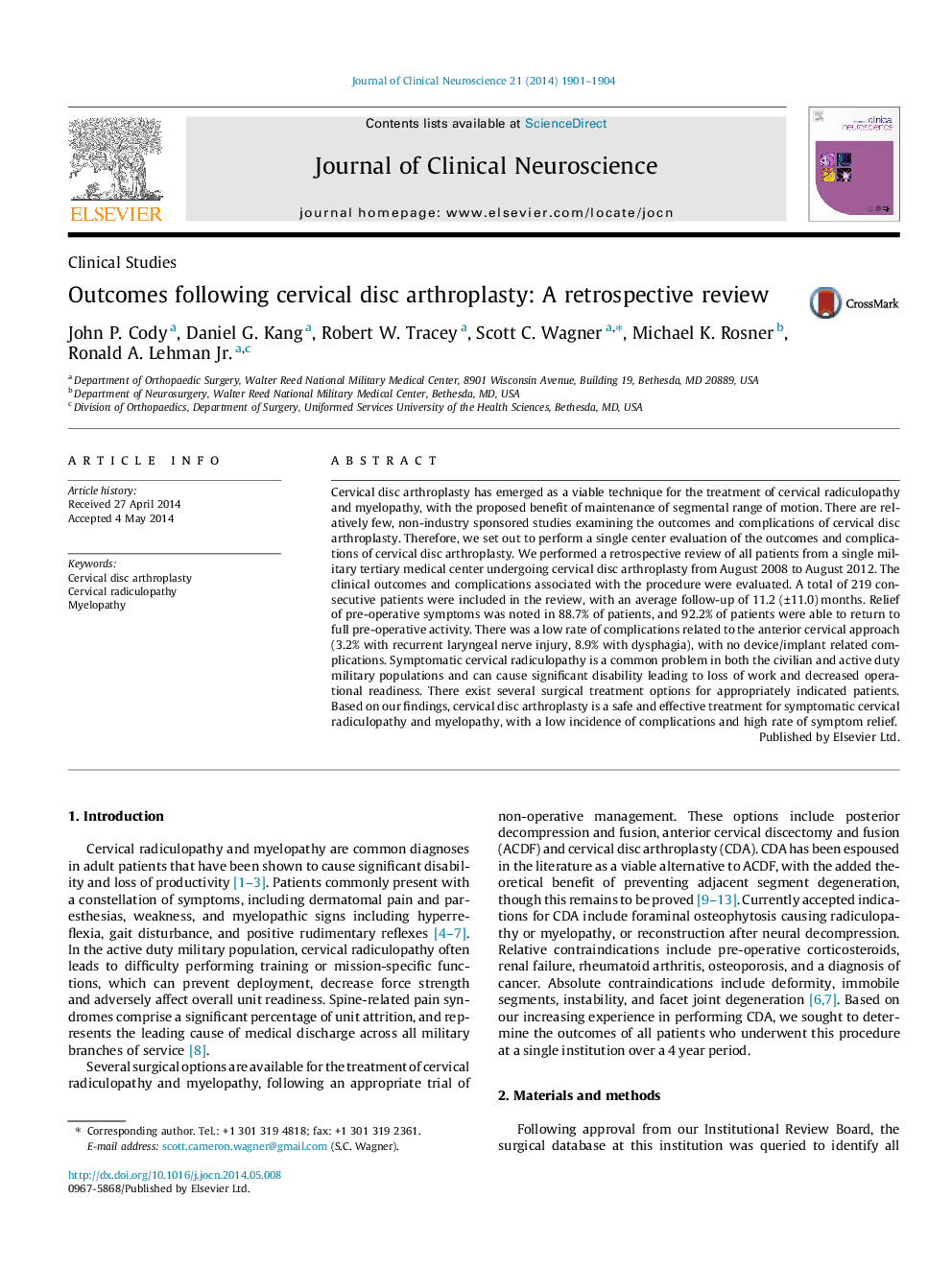| Article ID | Journal | Published Year | Pages | File Type |
|---|---|---|---|---|
| 3059118 | Journal of Clinical Neuroscience | 2014 | 4 Pages |
Cervical disc arthroplasty has emerged as a viable technique for the treatment of cervical radiculopathy and myelopathy, with the proposed benefit of maintenance of segmental range of motion. There are relatively few, non-industry sponsored studies examining the outcomes and complications of cervical disc arthroplasty. Therefore, we set out to perform a single center evaluation of the outcomes and complications of cervical disc arthroplasty. We performed a retrospective review of all patients from a single military tertiary medical center undergoing cervical disc arthroplasty from August 2008 to August 2012. The clinical outcomes and complications associated with the procedure were evaluated. A total of 219 consecutive patients were included in the review, with an average follow-up of 11.2 (±11.0) months. Relief of pre-operative symptoms was noted in 88.7% of patients, and 92.2% of patients were able to return to full pre-operative activity. There was a low rate of complications related to the anterior cervical approach (3.2% with recurrent laryngeal nerve injury, 8.9% with dysphagia), with no device/implant related complications. Symptomatic cervical radiculopathy is a common problem in both the civilian and active duty military populations and can cause significant disability leading to loss of work and decreased operational readiness. There exist several surgical treatment options for appropriately indicated patients. Based on our findings, cervical disc arthroplasty is a safe and effective treatment for symptomatic cervical radiculopathy and myelopathy, with a low incidence of complications and high rate of symptom relief.
